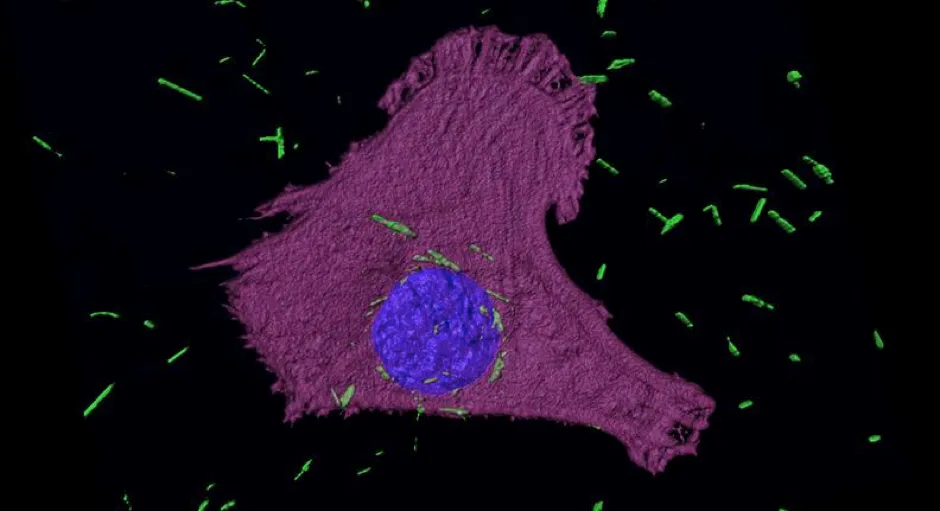Tiny gold tubes could be used to treat mesothelioma, a type of cancer caused by exposure to asbestos.
Once inside the cancer cells, the nanotubes – tiny hollow cylinders one thousandth of the width of a human hair – absorb light, causing them to heat up and kill the cells, a new study suggests.
Experts say more than 2,600 people are diagnosed in the UK each year with mesothelioma.Although the use of asbestos is outlawed in the UK, the country has the world’s highest levels of mesothelioma because it imported vast amounts of asbestos in the post-war years.
Global usage remains high, particularly in low and middle-income countries, which means mesothelioma will become a global problem.
More in cancer research:
- Blood test detects cancer up to four years before symptoms show
- Dog successfully treated with high-tech human cancer treatment
- Flashing blue lights switch on cancer-fighting cells
“Mesothelioma is one of the hard-to-treat cancers, and the best we can offer people with existing treatments is a few months of extra survival,” said Dr Arsalan Azad, from the Cambridge Institute for Medical Research at the University of Cambridge.
“There’s an important unmet need for new, effective treatments.”
Researchers from the University of Cambridge and the University of Leeds developed the gold nanotubes with physical properties they describe as “tunable”.This means they can tailor the wall thickness, microstructure, composition and ability to absorb particular wavelengths of light.

In the study, published in the Small journal, researchers added the nanotubes to mesothelioma cells cultured in the lab and found they were absorbed by the cells, residing close to the nucleus where the cell’s DNA lies.
When the team targeted the cells with a laser, the nanotubes absorbed the light and heated up, killing the mesothelioma cell.
“The mesothelioma cells ‘eat’ the nanotubes, leaving them susceptible when we shine light on them,” said Professor Stefan Marciniak, also from the Cambridge Institute for Medical Research and a fellow at St Catharine’s College, Cambridge.
“Laser light is able to penetrate deep into tissue without causing damage to surrounding tissue. It then gets absorbed by the nanotubes, which heat up and, we hope in the future, could be used to cause localised cancer cell killing.”
Read more nano tech:
- 'Nano tweezers' could help to diagnose and treat cancer
- Could stomach acid-powered nanomachines heal us from the inside?
- Nano-stethoscope can listen to individual cells
The team is developing the work to ensure the nanotubes are targeted to cancer cells, with less effect on normal tissue.
The tiny tubes are made in a two-step process: solid silver nanorods are created of the desired diameter, and gold is then deposited from solution on to the surface of the silver.As the gold builds up at the surface, the silver dissolves from the inside to leave a hollow nanotube.
The scientists say the approach allows the nanotubes to be developed at room temperature, which should make their manufacture at scale more feasible.

